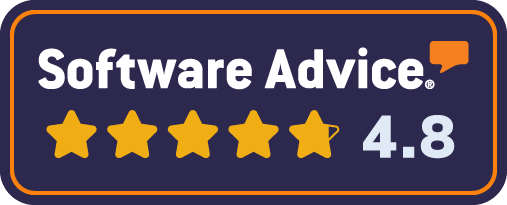Product Marketing Examples to Inspire Your Strategy
In product marketing, strategy is key. One of the best ways to learn is by studying the successes of others. Real-world examples offer clear lessons. This post showcases top product marketing campaigns. It provides insights to sharpen your own tactics.
Let’s dive into the methods that work and see how you can apply them.
1. Apple’s iPhone Launch

(Steve Jobs on stage presenting the first iPhone in 2007)
Background
Apple is renowned for its innovative products and exceptional marketing strategies. The launch of the iPhone in 2007 is one of the most iconic product marketing campaigns in history.
Marketing Strategy
Apple’s marketing strategy for the iPhone involved several key tactics:
- Keynote Presentations: Steve Jobs’ keynote presentations were masterclasses in storytelling and product demonstration. These events generated immense media coverage and built anticipation.
- Targeted Advertising: Apple utilized minimalistic and elegant advertising that focused on the iPhone’s unique features and user experience.
- Influencer Partnerships: Collaborations with high-profile individuals and celebrities helped to boost the iPhone’s visibility and desirability.
Results
The iPhone launch was a resounding success, revolutionizing the smartphone industry and cementing Apple’s position as a market leader. The iPhone’s impact on sales and brand perception was profound, contributing significantly to Apple’s growth.
Key Takeaways
- Storytelling is powerful: Effective storytelling can create a strong emotional connection with your audience.
- Simplicity works: Simple, clear, and elegant marketing can cut through the noise and highlight your product’s unique value.
- Leverage influencers: Collaborations with influential figures can amplify your reach and credibility.
2. Dropbox’s Freemium Model
Background
Dropbox, a cloud storage company, utilized a freemium model to grow its user base rapidly. Check out their launch video.
Marketing Strategy
Dropbox’s marketing strategy centered around the freemium model and a referral program:
- Freemium Model: Offering a free version of the product with limited storage encouraged users to try Dropbox without any financial commitment.
- Referral Program: Dropbox incentivized users to refer friends by offering additional free storage for each successful referral.
Results
This strategy led to exponential growth in Dropbox’s user base, as word-of-mouth referrals drove new sign-ups. By the end of 2009, [Dropbox](https://brandkit.com/dam-vs-dropbox had over 4 million users, and its user base continued to grow rapidly.
Key Takeaways
- Freemium models can drive adoption: Offering a free tier can lower barriers to entry and encourage users to try your product.
- Referral programs are powerful: Incentivizing users to refer others can create a viral growth loop.
3. Tesla’s Direct-to-Consumer

(A Tesla Direct-to-Consumer store)
Background
Tesla, an electric vehicle manufacturer, disrupted the automotive industry with its direct-to-consumer sales model.
Marketing Strategy
Tesla’s strategy involved several key components:
- Direct-to-Consumer Sales: Tesla bypassed traditional dealerships and sold directly to consumers, providing a seamless online buying experience.
- Minimal Advertising: Tesla relied on word-of-mouth, media coverage, and a strong online presence instead of traditional advertising.
- Engaging Online Presence: Tesla’s website and social media channels provided detailed product information, engaging content, and direct communication with customers.
Results
Tesla’s direct-to-consumer approach resulted in high levels of customer engagement and loyalty. The company’s market valuation and brand equity have soared, making it one of the most valuable automakers in the world.
Key Takeaways
- Direct relationships matter: Selling directly to consumers can enhance the buying experience and build stronger relationships.
- Word-of-mouth is powerful: Positive word-of-mouth and media coverage can be more effective than traditional advertising.
- Engage online: A strong online presence can drive engagement and provide valuable information to potential customers.
4. Slack’s Product-Led Growth
Background
Slack, a collaboration and communication platform, experienced rapid growth through a product-led approach.
Marketing Strategy
Slack’s strategy focused on delivering an exceptional user experience and leveraging word-of-mouth:
- User Experience: Slack prioritized ease of use, seamless integration with other tools, and a delightful user experience.
- Word-of-Mouth: Happy users naturally recommended Slack to their colleagues and friends, driving organic growth.
- Community Building: Slack fostered a sense of community among its users, encouraging them to share tips and best practices.
Results
Slack grew rapidly, reaching 8 million daily active users within a few years of its launch. The platform became a go-to tool for team communication and collaboration.
Key Takeaways
- Focus on user experience: A great product experience can drive word-of-mouth and organic growth.
- Community matters: Building a strong user community can enhance loyalty and advocacy.
- Integration is key: Seamless integration with other tools can make your product indispensable.
5. HubSpot’s Educational Content
Background
HubSpot, a marketing, sales, and service software provider, leveraged educational content to attract and retain customers.
Marketing Strategy
HubSpot’s strategy revolved around creating valuable educational content:
- Content Creation: HubSpot produced high-quality blogs, e-books, webinars, and courses that provided valuable information to their target audience.
- Inbound Marketing: The educational content attracted potential customers organically through search engines and social media.
- Lead Generation: Gated content such as e-books and webinars helped capture leads and nurture them through the sales funnel.
Results
HubSpot’s educational content strategy significantly boosted lead generation and customer acquisition. The company became a leader in inbound marketing, with a large and engaged audience.
Key Takeaways
- Education attracts: Providing valuable educational content can attract potential customers and build trust.
- Inbound marketing works: Content that addresses your audience’s pain points can drive organic traffic and lead generation.
- Gated content captures leads: Offering valuable resources in exchange for contact information can help build your email list.
6. Nike’s Storytelling and Emotional Branding

(Nike’s controversial Colin Kaepernick Ad 2019)
Background
Nike, a global leader in athletic footwear and apparel, is known for its powerful storytelling and emotional branding.
Marketing Strategy
Nike’s marketing strategy emphasized storytelling and emotional connections:
- Storytelling: Nike’s ads and campaigns often tell inspiring stories of athletes overcoming challenges, resonating with their audience on an emotional level.
- Emotional Branding: Nike’s “Just Do It” slogan and consistent messaging evoke feelings of motivation and empowerment.
- High-Profile Endorsements: Collaborations with top athletes and celebrities enhance Nike’s brand image and credibility.
Results
Nike’s storytelling and emotional branding have fostered strong brand loyalty and market dominance. The company’s campaigns have become iconic, resonating with millions of customers worldwide.
Key Takeaways
- Emotional connections resonate: Telling stories that evoke emotions can create strong bonds with your audience.
- Consistent messaging matters: A consistent and powerful message can enhance brand recognition and loyalty.
- Endorsements boost credibility: Collaborations with influential figures can enhance your brand’s credibility and reach.
Conclusion
The above examples highlight the diverse and innovative ways that successful companies have approached product marketing. Whether it’s Apple’s masterful storytelling, Dropbox’s viral referral program, Tesla’s direct-to-consumer model, Slack’s product-led growth, HubSpot’s educational content, or Nike’s emotional branding, there are valuable lessons to be learned and applied to your own marketing strategy.
By analyzing these real-world examples, you can identify key tactics and principles that resonate with your audience and align with your goals. Remember, effective product marketing is not about copying others but about adapting successful strategies to fit your unique context and objectives.
Your Call to Action
We’d love to hear your thoughts and examples! How do you plan to implement these strategies in your product marketing efforts? Have a great product marketing example to share? Submit your story for a chance to be featured in a future blog post to stories@brandkit.io.
Which example inspired you the most? Add your comment on our LinkedIn post.
If you found this post helpful, subscribe to our blog or follow us on Linkedin for more insights and updates. For personalized advice and strategies tailored to your business, contact us for a consultation or demo.
Additional reading
Here are the sources for the article with current links:
-
Apple’s iPhone Launch
- Steve Jobs iPhone 2007 Presentation (Full Transcript) - The Singju Post
- Steve Jobs introduces iPhone in 2007 - YouTube
- Apple Reinvents the Phone with iPhone - Apple Newsroom
-
Dropbox’s Freemium Model
- How Dropbox Got Its First Users - TechCrunch
-
Tesla’s Direct-to-Consumer Approach
- Why Vertical Integration Is The Path To Strategic Advantage - Forbes
- Applying Vertical Integration: What Companies Can Learn From Tesla’s Master Plan - Forbes
-
Slack’s Product-Led Growth
-6 Ways Slack Ignored Traditional Marketing To Kickstart A $27B Valuation - Foundation Marketing -
HubSpot’s Educational Content
- How HubSpot Grew a Billion Dollar B2B Growth Engine - Growth Hackers
-
Nike’s Storytelling and Emotional Branding
- How storytelling is at the heart of the Nike brand - Creative Review
- Nike (1987) – Just Do It - Creative Review
- Nike’s controversial Colin Kaepernick ad campaign its most divisive yet - The Guardian
These sources provide comprehensive insights into each company’s marketing strategy, offering valuable lessons that can be applied to your own product marketing efforts.
Product Marketing Examples to Inspire Your Strategy
In product marketing, strategy is key. One of the best ways to learn is by studying the successes of others. Find top product marketing campaigns and insights to sharpen your tactics.


